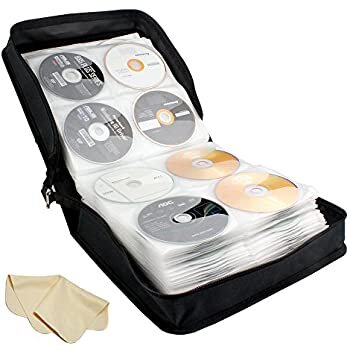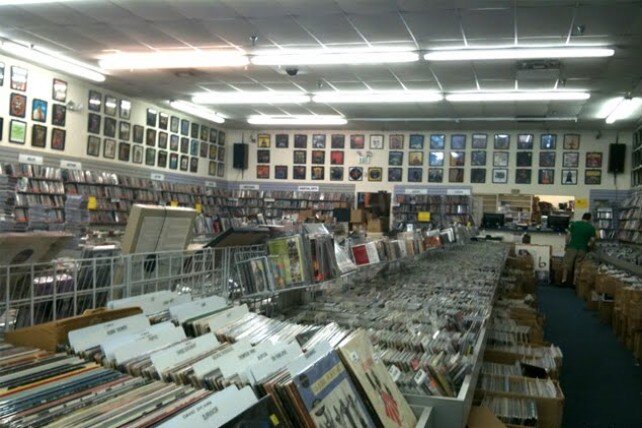Am I a music “collector”? and other reflections on buying music
Living and working during the COVID-19 era has increased the amount of time many of us have spent with our stuff. For me, “stuff” includes a lot of books, magazines, pictures, trinkets, and tchotchkes, and of course music. Yes, I’m a citizen of the digital era but I also have multiple CD “books” (canvas booklets with CD sleeves) and a six shelf piece of furniture stocked with boxed sets and bulky compilations. Never mind the boxes of CD mixes!
Alas, I realized that I’ve become one of “them”: a music collector. One who doesn’t plan to sell any of his music. And one who is not digitizing everything and throwing it all away. This (obvious) realization got me thinking about the memories we attach to buying music and how that whole ecology changed so quickly, especially for people who bought music before there were MP3s.
Tower Records, formerly located on the corner of Newbury Street and Massachusetts Avenue in Boston’s Back Bay, was the site of many music memories during college..
When I began my doctoral program in 1999, I co-planned a conference related to contemporary issues with members of our program’s cyberculture working group. This included writing a presentation on how people built community through cyberculture and creating a bibliography of the music industry’s emerging concerns about MP3 technology and file sharing programs like Napster and Livewire. At the time, the music industry was highly concerned about losing sales and revenue to illegal downloads. Though it seems like a millennia ago many bands, such as Metallica, were highly concerned about fans stealing their music and getting inferior quality recordings.
CD books were an essential accessory for music buyers until the reign of downloading and streaming rendered them nearly obsolete in the mid-2000s.
Shortly after iTunes began selling individual songs ($0.99!) and albums, and the iPod shuffle changed the way people purchased and listened to music. Parallel to these changes was the decline of traditional record sales and the declining role of brick-and-mortar record stores. Over the course of 20 years or so the listening and purchasing habits of music aficionados and more casual listeners has shifted in unexpected directions worth considering.
Never mind the horrible fluorescent lighting. The important feature of this picture is the cornucopia of music stocked at CD depot in College Park, Maryland. It’s one of the few new and used CD music stores still operating on the east coast.
When I began purchasing music actively as an undergraduate student, music megastores like Tower Records, Virgin Megastore, Sam Goody, and HMV were prominent in most big cities. Attending college in the Back Bay of Boston in the mid-1990s gave me access to Tower Records, which had a mighty four story store on the corner of Massachusetts Avenue and Newbury Street; HMV, located in Downtown Crossing; and an abundance of local stores such as Mystery Train, Newbury Comics, and various used record stores, all of which are long gone. Though Mystery Train and Newbury Comics persist, Tower closed a while ago as did the other franchises.
The closing of Melody Record Shop in Washington D.C. in 2012 was heartbreaking. The selection and wonderful salespeople were a great gateway to exploring different artists and genres.
Buying cassette tapes and CDs was part of a bigger social process that sometimes took hours. Along with rifling through the carefully curated music, organized by genre, you could also purchase magazines and books on various subjects, music accessories, such as CD “books” and portable devices, VHS tapes and DVDs, and, at the Tower Records, at least, you could rent movies as well. Essentially, it was as much a multimedia store as it was a place to buy music. In the 1990s Border’s Books and Music and Barnes & Noble bookstores also got in the business of selling music.
The D.C. based independent bookshop and record store Olsson’s was a beloved store founded in 1972 whose locations closed in the early 2000s.
When I moved from Boston to the small town of Bowling Green, Ohio for my Master’s degree program I spent considerable time (and money) roaming the aisles of our local record store which sold new and used CDs. Periodically, I rode along with my friends for the half-hour trek to Toledo, whose population was beginning to trickle out. Circuit City and Best Buy sold new music and we had several spots to buy used music as well.
Collectively, between Boston and Bowling Green I accumulated hundreds of tapes and CDs, not to mention music I purchased while traveling. During this time, I expanded my collection from the mainstream pop music I grew with, and newer music, to music from pre-rock genres, such as jazz, and various forms of the blues. I also came to appreciate albums as an artistic form.
Moving to the DC-Maryland-Virginia (DMV) area caused me to eliminate bulky CD cases entirely and place everything in CD books. More importantly, the area offered a feast of local shops: there was CD Depot in College Park, Maryland; Melody Records, Olsson’s Books and Records, and 12 inch (a store specializing in dance music and CD single remixes) in DuPont Circle; numerous used record shops in Adam’s Morgan; plus franchises like the Border’s in Downtown D.C. and Tower Records near George Washington University.
Looking back, CD Depot (still in operation) had stupendous variety. When I look at my Quintessential Billie Holiday Volumes 1-9; 1963’s John Coltrane and Johnny Hartman, and various CDs from Terence Trent D’Arby, Alison Moyet, and Brenda Russell I’m reminded of rifling through their selections and getting dust on my fingers. I was especially fond of Melody and Olsson’s. I read a great review essay on jazz singer Mildred Bailey’s recordings by the late D.C. based critic Joel E. Siegel in the Washington City Paper and Melody satisfied my curiosity. Their salespeople were hardcore music fans who regularly stocked the store with the obscure “old” stuff I like. Olsson’s also attracted passionate listeners and readers. They were usually well stocked with blues, jazz, & R&B. I first purchased a few Betty LaVette albums there and have never been able to unhear her. The Tower in D.C. is where I first engaged with the sensitive Sinatra (In the Wee Small Hours of the Morning) and gave Dylan a chance.
The proliferation of downloading, portable devices, and streaming have changed the listening landscape, but the impact varies by relationship. Some general observations regarding the habits of general listeners:
· Streaming or downloading music exclusively
· Rarely to never purchasing music, other than paying for streaming
· Understanding music as purely digital and aural. Liner notes, artwork and other physical aspects are inessential.
· Consuming music in a fragmentary form. There’s less fidelity to the album as a special form that needs to be listened to in a specific order. Listeners are also more interested in album tracks than the whole.
· Conceiving of music visually thus the proliferation of video albums (Beyoncé’s Lemonade, Janelle Monae’s Dirty Computer) and perceptions of services like YouTube and Vimeo as musical sources.
Many aficionados also stream and download but operate with a different perceptual sensibility. For them music stands out from other media forms and has grown more precious and rarer especially in physical form. Some tendencies include:
· Purchasing music regularly, and doing so in physical form including CDs, vinyl, and cassettes.
· Listening to music as albums rather than as tracks.
· Committing to developing and maintaining loyalties to established favorite artists, especially.
· Possessing “dated” music accoutrement like boom boxes, CD books (for home and travel!), and music storage, such as shelves.
· Investing in boxed sets and compilations that offer more extensive overviews of artists’ output.
· Reading music related books such biographies and genre histories.
· Relishing music packaging—liner notes and artwork.
· Growing awareness of selves as “collectors” and curators.
These perceived differences between the general listener and aficionado is less about their love and passion toward music itself than a different orientation of the time and space music consumes. For example, a digitally exclusive listener may share the same desire to understand music historically and to attend concert with an aficionado. But the curatorial aspect of aficionados motivates them (us?) to invest money, time, and physical space in music.
This attachment to the memories of space and place beyond the music itself probably relates to having various pre-digital relationships to music which imbues individual recordings with ties to specific locations. Almost every piece of music I own has a story inseparable from its original home. By association then those antiquated CD holders aren’t just dusty reminders an old form. They remind us that music has the potential to tell stories about who we are and where we’ve been as profoundly as any object.
COPYRIGHT © 2020 VINCENT L. STEPHENS. ALL RIGHTS RESERVED.




